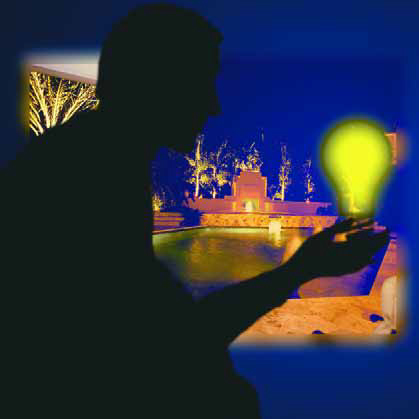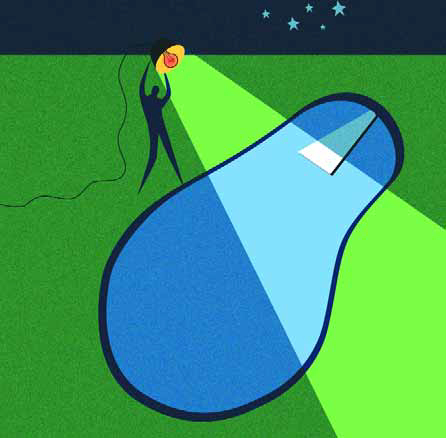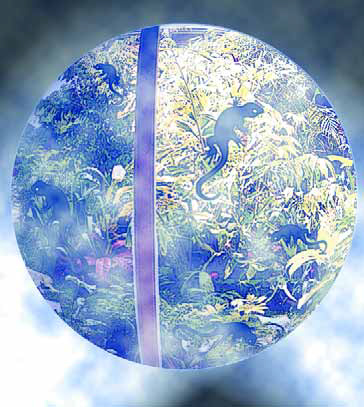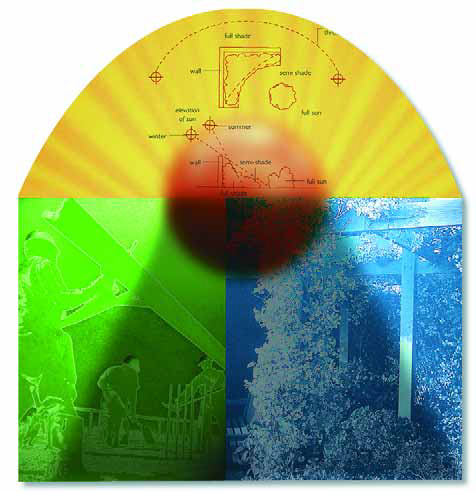Outdoor Living, Fire Features, Amenities & Lighting
When we work in public settings, the basic demand on lighting designers is for straightforward fixture layouts capable of providing enduring effects and requiring minimal ongoing attention. That doesn't sound particularly exciting - and it's not, unless the lighting designer uses it as a baseline and reaches above and beyond.Parks, plazas, resorts and historical sites (among many others) are all spaces that really should come alive at night, but their lighting designs often run counter to that vitality by being so utilitarian that they spark boredom rather than energy. It's easy to understand why this happens: Because such spaces play host to high levels of traffic and often multiple uses, they demand lighting treatments that
We all know that plants are beautiful in daylight. Perhaps less well known is the vast visual potential they posses when carefully and thoughtfully lit at night. It's no small challenge. Indeed, maximizing the beauty of most any landscape while also ensuring that your lighting design works well throughout the lifetime of the landscape requires a keen understanding of both plant materials and the lighting techniques that will bring them to life when the sun goes down. Furthermore, surrounding watershapes with well-lit spaces and foliage will add a distinctive aesthetic dimension to the overall design. To my mind, there's no substitute for paying attention to every plant in the plan, because overlooking any of them or ignoring the role each has to play in the overall landscape will almost invariably detract from the effectiveness of the lighting design. You can't overlook technology, either, or the need to sort through the variety of techniques that can be used to light plants while keeping an eye on a wide range of practical, aesthetic and creative issues. When you encompass all of this successfully, the results will often
Maximizing the potential of landscape lighting is always about thinking ahead - a philosophy that absolutely applies when it comes to planning and designing the lighting for a watershape. The process begins with a set of questions that should be considered at the outset of any project: Is the watershape to be the focal point of the composition, or is it to be one among equally important features such as plantings, sculptures or hardscape details? Is the feature to be visually prominent at night, or is it to blend in with the darkness? Will the water you are lighting be in motion, or are you working with a still surface? Observers and chief vantage points also come into play. If the feature will mostly be viewed from passing automobiles rather than by pedestrians, for example, the issue of glare must be directly considered for safety reasons. If the watershape is to be seen from a lit interior space, then we know that its lighting level must be equal to or greater than that of the interior lighting. Likewise, relative brightness is an issue in making the illuminated watershape work with the rest of an illuminated landscape. The most important need in all of this is for
An amenity once found almost exclusively on major commercial properties, sophisticated outdoor sound systems are becoming increasingly popular in today's residential landscapes and gardens. In fact, says audio specialist Scott Sylvester, modern speaker systems are adding all-new dimensions to exterior spaces, giving watershapers and others the opportunity to provide their clients and guests with a complete outdoor sensory experience.
When we think about how the environments we create are used, the first image that probably comes to mind is one of people enjoying themselves in or near the water on a beautiful, warm afternoon. That's natural - and a vision that's a big part of the watershape experience we set up for our clients - but it ignores the other half of the day when our clients are left to themselves with our work. The fact is that watershape owners are mostly working people who spend their days away from home earning their daily bread. So despite the fact that we build these things
For the most part, the designers and builders of pools, spas and other watershapes visualize their projects in full sun, install them during daylight hours and seldom (if ever) see them after the sun goes down. That's both a problem and a shame, and it's reflected in the fact that the run of projects you encounter by mainline pool-industry folks - and, to a lesser extent, by people from the landscape trades - tend to treat the lighting of exterior spaces as an afterthought if it's really thought about at all. In fact, I'll go so far as to say that
What started as a slow simmer has now come completely to a boil. Ten years ago, precious few of our clients had little or no interest in setting up outdoor cooking areas to go along with their pools, spas and waterfeatures. That's certainly not the case today, when fully 90% of our clients want us to set up some sort of kitchen amenity as part of their deck and patio areas. You don't have to be a marketing genius to see what's happening: It's great fun to
We all know how much watershapes add to the beauty of any setting, but I suspect we also tend to take for granted the integral role water plays in sustaining those environments. It's obvious that no landscape would survive long without a steady infusion of water to nurture its plants. Less obvious, however, are ways in which water can be used to make some places more hospitable to other life forms that inhabit them. This isn't really new. As has been noted in several articles published in WaterShapes, water has been used in arid climates for centuries as a prime source of "air conditioning" for
I truly enjoy including shade structures in my designs. Whether I'm working with an overhang, an arbor, a loggia, a pergola or some other structure (and, yes, they are all different), I see them as ways to create visual extensions of a house - and wonderful places to enjoy being next to the water. There is, of course, as much art and skill to designing and installing the right shade structure as there is to setting up all of the other features of a great backyard. Done well, a structure that projects out from a house will pull your eye from inside to outside while it provides relief from the sun. Similarly, freestanding shade structures
I love the versatility of fiberoptic lighting: The technology works equally well in conjunction with landscaping or architectural features, and because there's no electrical current to worry about at the light fixtures themselves, they're a natural around water. Better yet, you can use fiberoptics to create traditional point-light sources, or you can set them up as mellow bands of light over long stretches. I don't use fiberoptics on every job, but when the situation is right and the customer is willing, I'm eager to dig in and design a system that will wow them for years to come. As is true with any lighting system, the main reason to use fiberoptics is






















